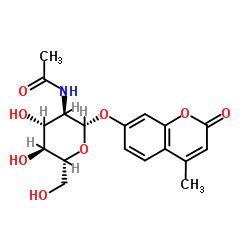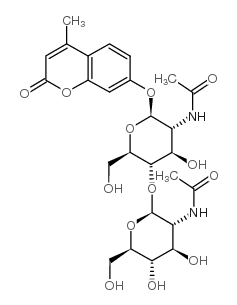| Structure | Name/CAS No. | Articles |
|---|---|---|
 |
4-Methylumbelliferyl-N-acetyl-ß-D-glucosaminide
CAS:37067-30-4 |
|
 |
4-METHYLUMBELLIFERYL BETA-D-N,N'-DIACETYL-CHITOBIOSIDE
CAS:53643-12-2 |